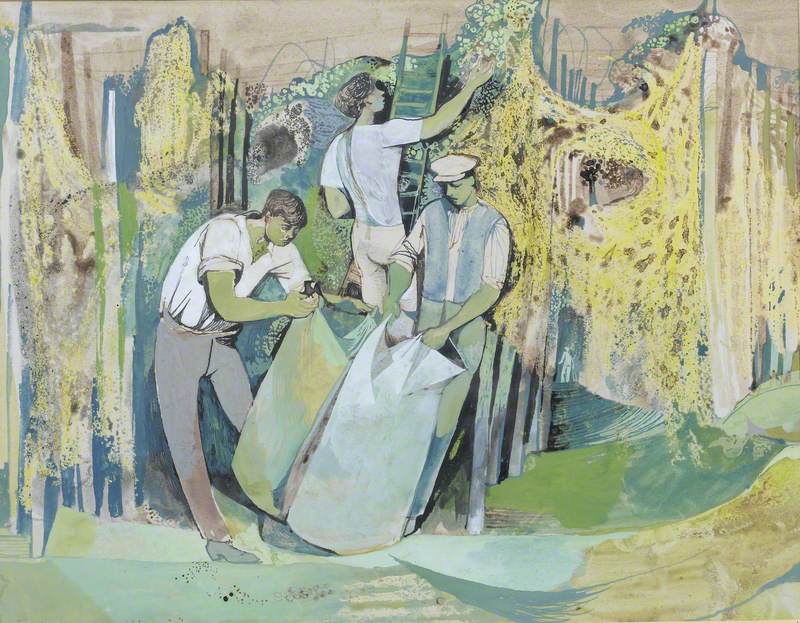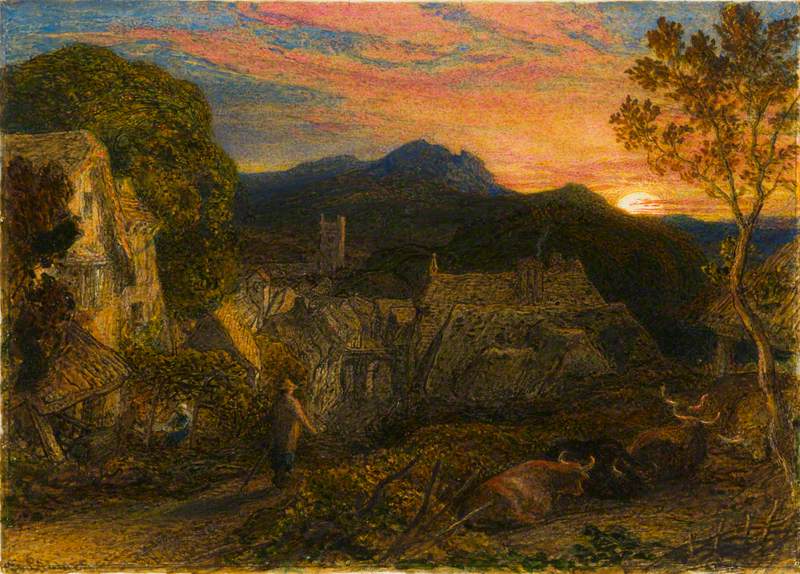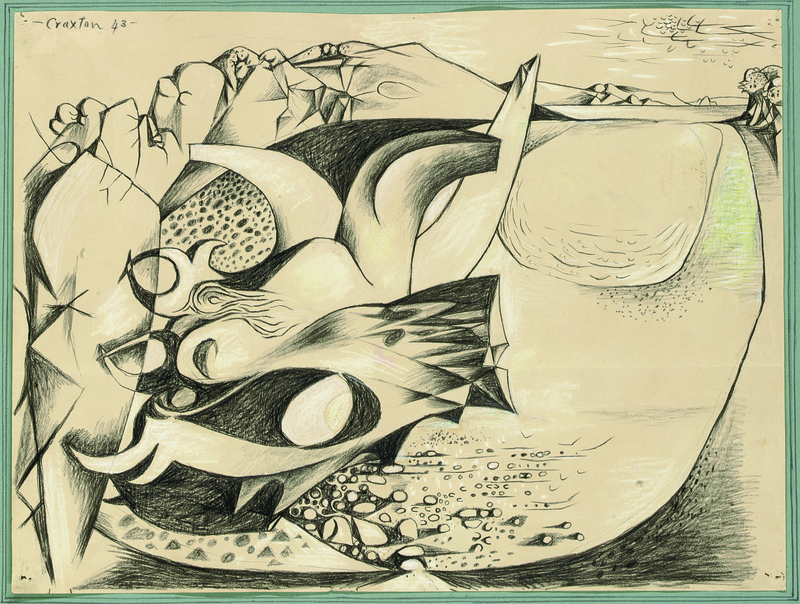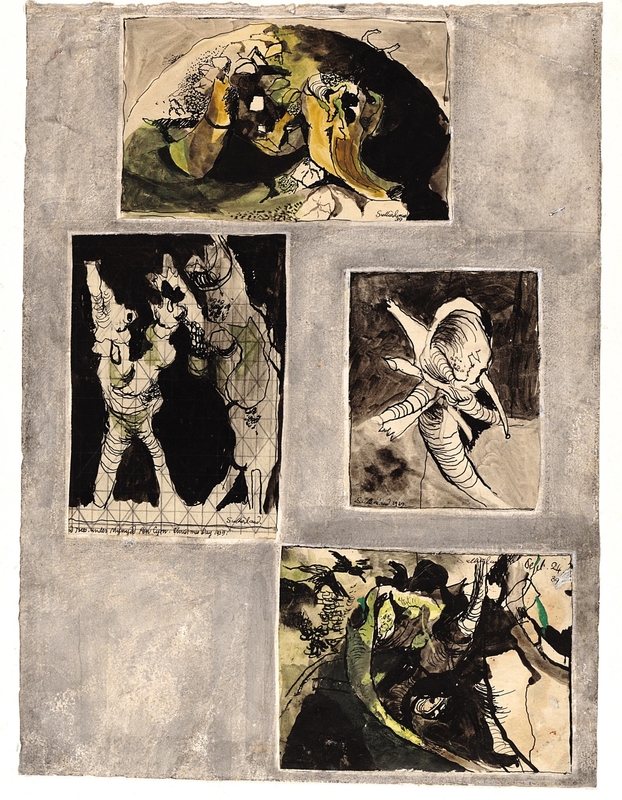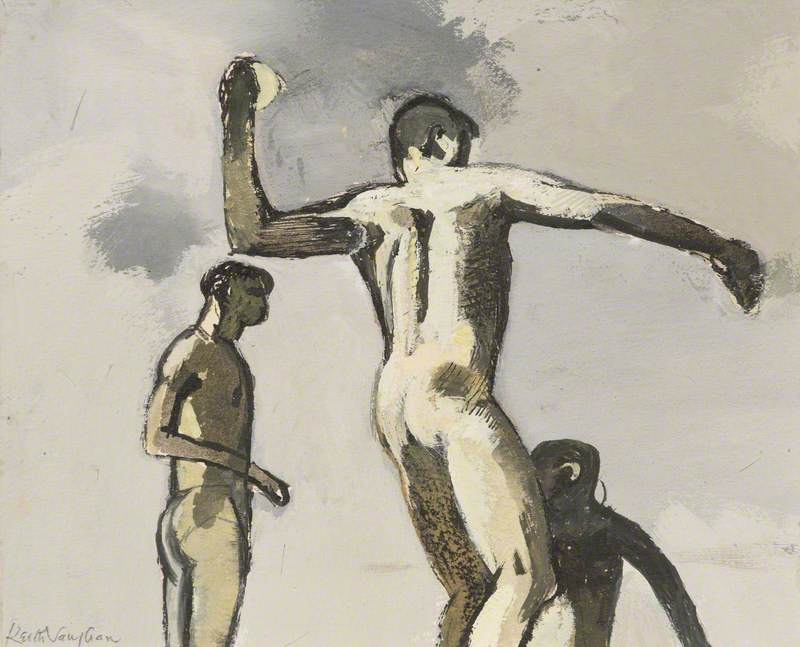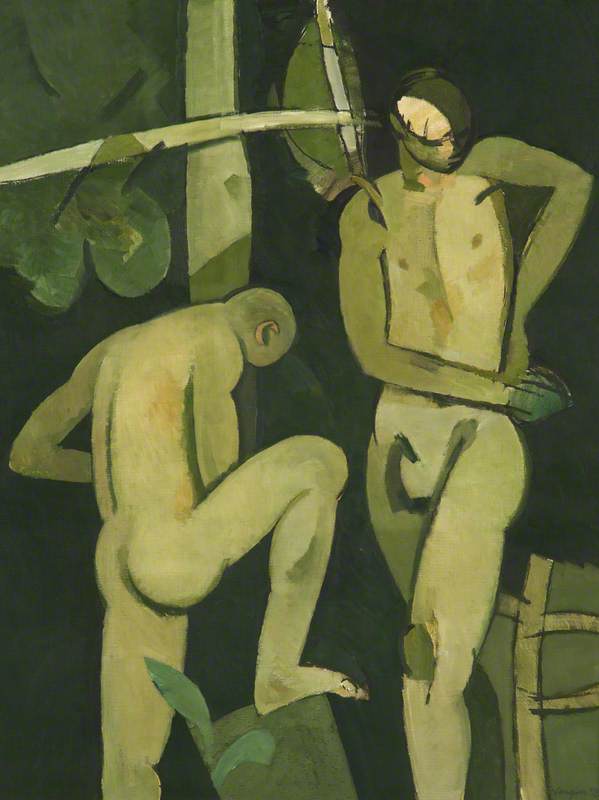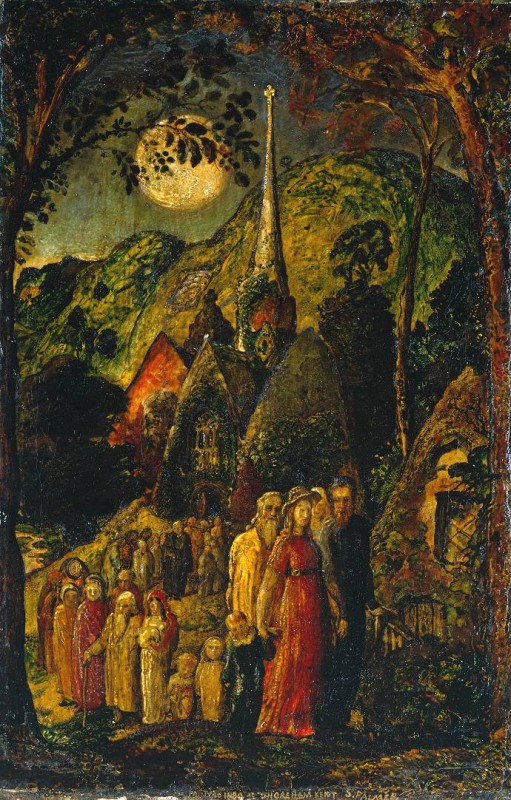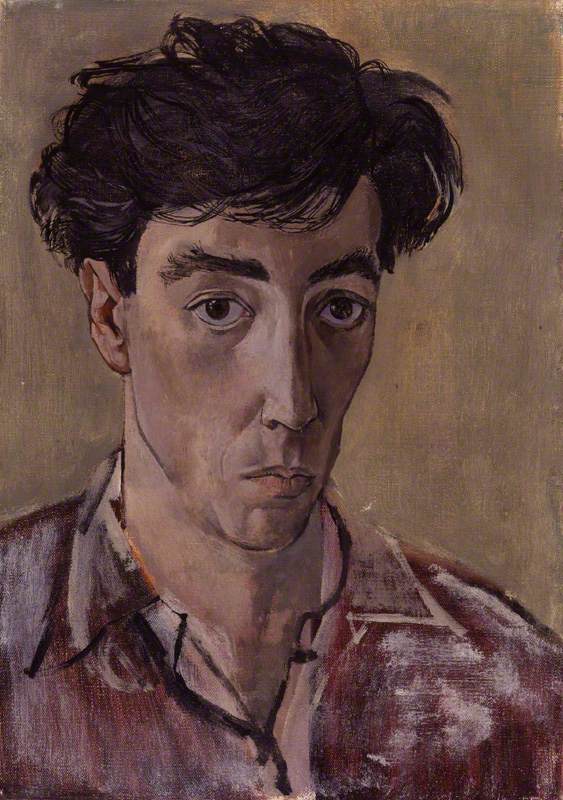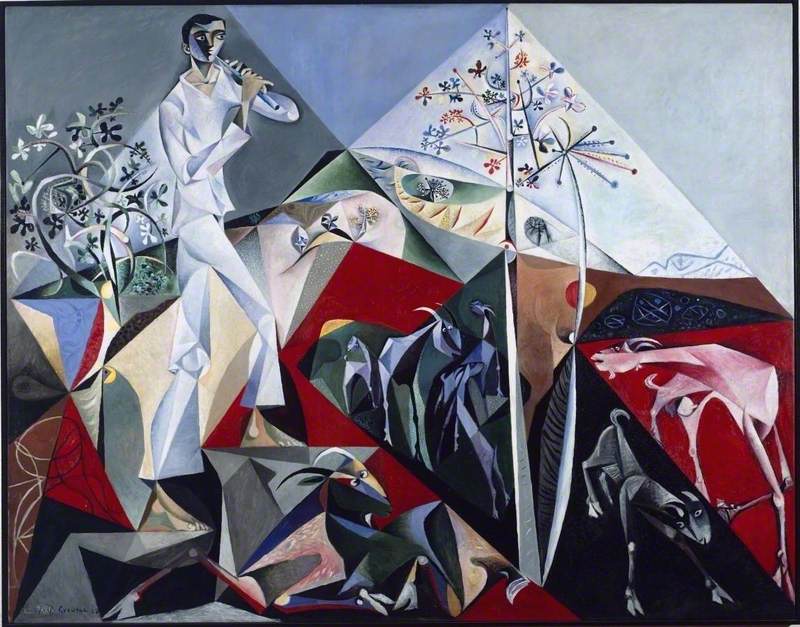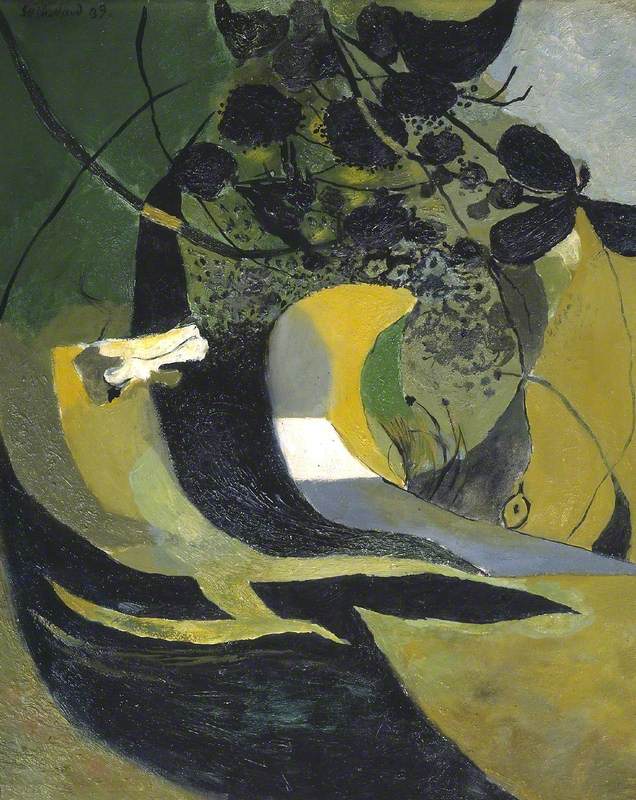To celebrate LGBT+ History Month 2023 we are delving into the lives of three gay artists whose poetic landscapes offered an escape from war-torn Britain. You can see all these works in the exhibition 'Changing Times: A Century of Modern British Art' until the 16th April 2023. The exhibition brings together almost one hundred works from two important collections: Bedford's own Cecil Higgins Art Gallery Collection and the Ingram Collection of Modern British Art.
-
Keith Vaughan, John Minton and John Craxton
This curation follows the three artists through the Second World War and beyond. Their work is rich and poetic, inspired by the British landscape and its history, but tinged with a sombreness that reflected the times they lived through. They were part of a group known as Neo-Romantics: British Artists working in the 1930s and 40s, who looked back to the visionary landscapes of Samuel Palmer and William Blake, but were also influenced by modern art movements.
-
The Hop Pickers
The Hop Pickers 1945This work is one of several in the exhibition that is inspired by pastoral images of harvesters by nineteenth century artists Samuel Palmer and William Blake. As this is 1945, the harvesters are not boys from the villages but prisoners of war or demobbed servicemen.
Minton was the only one of our three artists who saw active service. His application as a conscientious objector was rejected and he spent two years with the Pioneer Corps before being sent home from the front due to what now appears to have been a nervous breakdown.
After the war Minton was known as the life and soul of the Soho art scene where he spent time in jazz clubs and bars with friends like Lucian Freud and Francis Bacon.
John Minton (1917–1957)
Watercolour, pen, gouache & chalk on paper
H 26 x W 33.5 cm
The Ingram Collection of Modern British and Contemporary Art
-
By the 1950s Minton was struggling again with his mental health. He began to question his artistic contribution as British art became more abstract. He also struggled with anxieties about his relationships. In 1954 there was a high profile legal case where three gay men were imprisoned, which reinforced Minton’s concerns about the penalties of being open about his sexuality. In 1957 he took an overdose and tragically died aged only 39. With his death Britain lost one its leading post war artists.
-
The Bellman
The Bellman 1881The Neo-Romantics were hugely influenced by the work of the Victorian artist Samuel Palmer (1805–1881). Palmer, whose work was not appreciated in his own lifetime, had been rediscovered in the 1920s. His visionary and spiritual landscapes had a profound impact on the young artists.
‘You might say my work is ‘escapist’ art and, somehow, it became an antidote to the war in the same way that Palmer’s was an antidote to his times’ John Craxton.
Samuel Palmer (1805–1881)
Watercolour, bodycolour with gum arabic & pencil on paper
H 17.2 x W 23.9 cm
The Higgins Bedford
-
Yellow Estuary Landscape
Yellow Estuary Landscape 1943Craxton first saw Palmers work in 'Horizon' a literary magazine published by his patron the art collector Peter Watson. Watson was to be incredibly generous in helping a new generation of young gay artist’s further their careers. For Craxton he paid for a studio shared with Lucian Freud, published his work and introduced him to Graham Sutherland.
Watson arranged for Craxton to join Sutherland in Pembrokeshire where this work was made. Sutherland encouraged the young artist, ‘It’s important to invent. Take a section of the landscape and try to evoke the wider place.’ This drawing is of an estuary Craxton had seen in a painting of Sutherland’s a couple of years earlier. He asked to be shown where is was and made several drawings of it.
John Craxton (1922–2009)
Black crayon & coloured chalk on paper
H 30.5 x W 50.8 cm
The Ingram Collection of Modern British and Contemporary Art
-
Trees under Mynedd Pen Cyrm
Trees under Mynedd Pen Cyrm 1939War made it harder for our young artists to see art. The National Gallery moved their collection to a Welsh Mine for safety, only bringing back one painting a month. Kenneth Clark, the galleries director instead, filled the walls with work by current artists such as Henry Moore, Graham Sutherland and John Piper. This older generation of Neo-Romantics had all been given commissions as Official War Artists and were a huge influence on our three.
They could also see modern work in new magazines such John Lehmann’s ‘The Penguin New Writing’ and Peter Watson’s ‘Horizon’. It was in ‘Horizon’ that Craxton saw Sutherland’s ‘Association of Oaks’ for the first time the study of which you can see here on the left.
Graham Vivian Sutherland (1903–1980)
Pen & watercolour on paper
H 29.8 x W 22.4 cm
The Higgins Bedford
-
The Garden at Ashton Gifford
The Garden at Ashton Gifford 1942In the 1940s Minton and Vaughan became close friends. They would meet up at Peter Watson’s flat and go drinking in Soho with fellow gay Neo-Romantic artists Robert Colquhoun and Robert MacBryde.
Both were conscientious objectors though only Vaughan’s application was accepted; he was sent to Wiltshire in the Non-Combatant Corps. Ashton Gifford House was close to where he was stationed and he spent a summer on the estate clearing the gardens and neighbouring woodlands.
John Keith Vaughan (1912–1977)
Pen & ink, wash, crayon & gouache on paper
H 34.3 x W 47 cm
The Ingram Collection of Modern British and Contemporary Art
-
Young male figures in poetic atmospheric landscapes was a theme throughout our artists work at this time. They were very different to the patriotic images of strong fighting men seen in propaganda art. They were in no way anti-war; they were contributing to the war effort by showing that British culture was something worth fighting for.
-
Figure Throwing at a Wave
Figure Throwing at a Wave 1950In the summer of 1939 Vaughan spent his weekends at Pagham in Sussex sunbathing and swimming. He took photographs of his friends sometimes posed sometimes at play, naked or near naked. Vaughan had learnt how to develop his own photographs a few years before which meant the risk of his photographs exposing his sexuality was reduced.
He used the photographs as inspiration for his work throughout his career. This work painted in 1950 was based on one where his friends were throwing seaweed at one another, though here the seaweed is replaced as a stone that the man throws into the sea. The figures also show the influence of Cezanne’s bathers which can also be seen in the exhibition.
John Keith Vaughan (1912–1977)
Gouache on paper
H 14 x W 16.5 cm
The Ingram Collection of Modern British and Contemporary Art
-
Greek Dancer
Greek Dancer 1952Craxton was the only one of our artists to make it past his sixties. He had always been the least well of the three: a diagnosis of pleurisy led to an army recruitment officer explaining ‘he would be as much use to the war effort as a three-legged horse’.
When the war ended he visited Greece, and eventually moved to the island of Crete where he found his own pastoral idyll. His melancholic war images gave way to joyful pictures filled with light and colour.
John Craxton (1922–2009)
Hand-coloured linocut on paper
H 21 x W 16 cm
The Ingram Collection of Modern British and Contemporary Art
